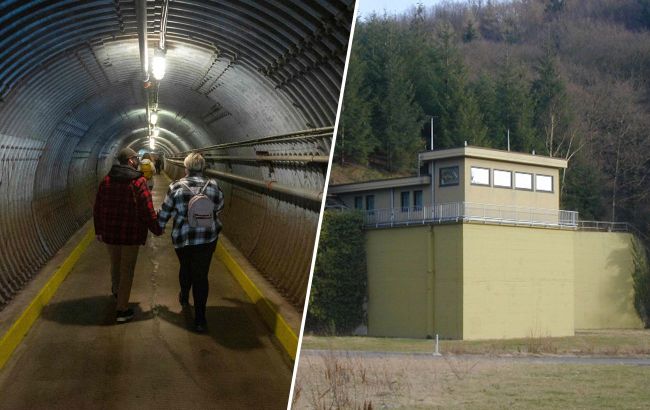Bunkers that can survive a nuclear strike: Locations and modern secrets
 Secret bunkers built in various countries in case of a nuclear threat (RBC-Ukraine collage)
Secret bunkers built in various countries in case of a nuclear threat (RBC-Ukraine collage)
These sites were once top secret, but today they are open to tourists, artists, and researchers. They are places where governments planned for survival and shelter in the event of a nuclear threat.
RBC-Ukraine has compiled information on five of the world’s most famous secret bunkers, including their locations and current uses.
In the 20th century, during the Cold War, the world lived under the constant fear of nuclear danger. Governments built underground cities, storage facilities, and communication centers to prepare for potential disasters.
Most of these sites were classified and inaccessible even to their own citizens. Over time, however, many have been transformed into museums, art spaces, and even hotels.
Regierungsbunker (Germany)
This bunker is located near Bonn, the former capital of West Germany. It was built as an emergency government center in case of a nuclear attack. The complex featured over 17 km of tunnels, a self-sufficient life support system, communication facilities, and even rooms for ministers.
After Germany’s reunification, the bunker became obsolete. In 2008, part of the complex was opened to visitors, and today it operates as a museum, showing what the reserve state looked like underground.
Burlington Bunker (UK)
Located in Wiltshire, beneath the town of Corsham, this is one of Britain’s largest secret bunkers. It was designed as an underground city for government evacuation, complete with a BBC studio, hospital, dining hall, and even a bathroom for the Prime Minister - everything needed to sustain 4,000 people.
The bunker remained classified until 2004. Today, it is partially open to researchers, while other areas serve as a data center and storage facility.
Diefenbunker (Canada)
Located in Carp, Ontario, the Diefenbunker was Canada’s civil defense headquarters, named after Prime Minister John Diefenbaker. Built in 1959, it was designed to withstand a nuclear explosion and ensure government continuity.
Today, it serves as a Cold War museum. Visitors can explore authentic rooms, equipment, documents, and even a nuclear alarm simulation. It is one of the best-preserved facilities of its kind in the world.
Teufelsberg (Germany)
In Berlin, atop an artificial hill made from the rubble of Nazi-era buildings, sits a US signal interception station. During the Cold War, intelligence services used it to spy on the Eastern Bloc.
After the fall of the Berlin Wall, the site fell into disrepair. Later, it was opened to artists, and today Teufelsberg functions as an art space with graffiti, exhibitions, concerts, and city viewpoints - an example of a place of fear transformed into a place of freedom.
Swiss Zero Star Hotel (Switzerland)
In the Swiss mountains, a former civil defense bunker has been transformed into a zero-star hotel. Its concept focuses on minimalism, concrete, silence, and complete isolation. There is no TV, internet, or entertainment - only a bed, a lamp, and the experience of living history.
This hotel is more than a tourist attraction; it is a philosophical project that invites reflection on the meaning of comfort, safety, and freedom.
Secret bunkers are about fear, strategic thinking, and human ingenuity. They also show how time changes their purpose: what was once hidden is now open, and what once concealed life now reveals it from the inside.
You might also be interested in:
Sources used in this article include: Diefenbunker Museum (Canada), Regierungsbunker Museum (Germany), Teufelsberg Berlin, Zero Star Hotel (Switzerland), Burlington Bunker (UK) – Subterranea Britannica.

